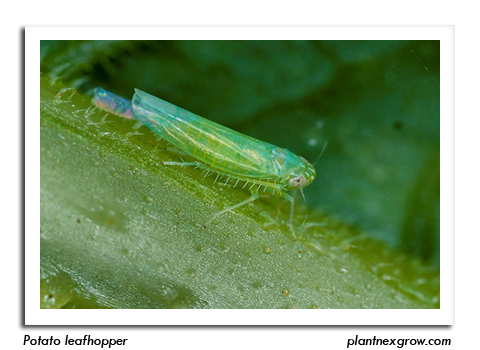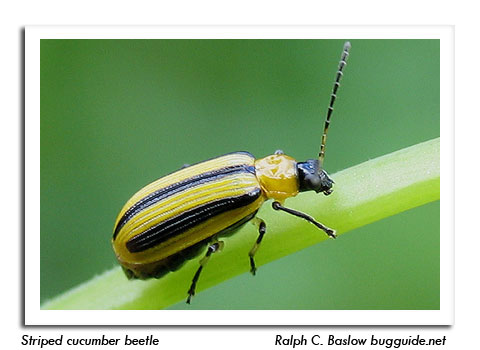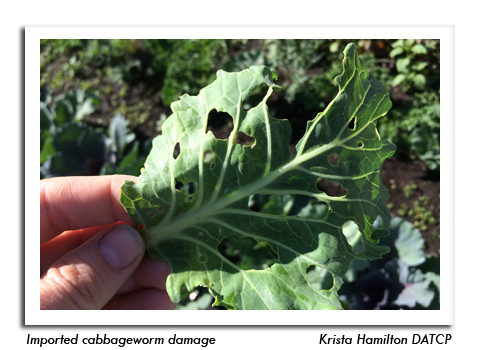
 |
|
|
Vegetables
Volume 64 Number 7 Date 06/13/2019 POTATO LEAFHOPPER - Recent harvesting of first-crop alfalfa has likely driven leafhoppers into nearby vegetable crops. Commercial potato and snap bean fields may be monitored with a standard 15-inch sweep net by taking 25 sweeps per site, sampling from at least five sites per 30 acres. Counting nymphs and adults by turning over 25 leaves from the middle of the plant is the protocol for gardens or smaller-acreage farms. Recommended treatment thresholds for potatoes are one adult per net sweep or an average of 2.5 nymphs and adults on the undersides of 25 potato leaves. In snap beans, the threshold is 0.5 adults and nymphs per sweep for seedlings, and one leafhopper per sweep for larger plants in the third trifoliate to bud stages. STRIPED CUCUMBER BEETLE - Cucumbers, melons and other vine crops will be at risk of feeding injury and bacterial wilt transmission as beetles continue to emerge this month. Bacterial wilt infection can develop when only 10% of the population are carriers of the pathogen. Scouting field edges and interiors two times per week is recommended. Beetle counts in excess of 4-5 per 50 plants may warrant control. IMPORTED CABBAGEWORM - Larvae have emerged statewide and are appearing on cabbage, cauliflower and broccoli leaves. Manual removal of the caterpillars is suggested for smaller gardens, while treatment with a product containing the bacterial insecticide Bacillus thuringiensis (Bt) subspecies aizawi (Agree, Xentari) or subspecies kurstaki (Biobit, Cutlass, DiPel, Javelin, Lepinox, MVP, Thuricide) can be considered for larger production fields. Bt is most effective against small larvae and may not control larger, full-grown caterpillars. Most Bt products persist on plants only a few days and must be reapplied if small larvae are actively feeding. VARIEGATED CUTWORM - Larvae were found in two Jackson County cornfields earlier in the week. This sporadic pest, which last appeared in record numbers in 2012, is one of the most damaging cutworms on beans, potato and tomato. The caterpillars noted near Melrose were approximately ¾-inch long on June 11. -- Krista Hamilton, DATCP Entomologist 


|
|
|